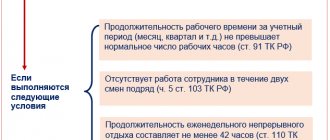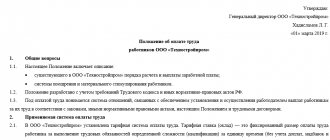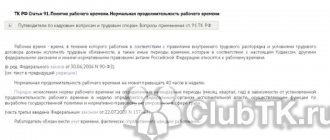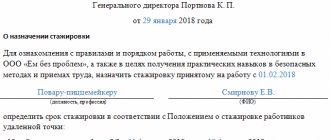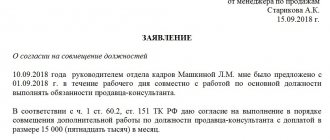Main types
Experts divide breaks into several large groups:
- general and special;
- mandatory and recommended;
- included in wages and not included.
General breaks under the Labor Code are provided to all workers, this is a lunch break and possible short-term breaks for personal needs.
Special include breaks for certain areas of work or for certain categories of workers, for example, for workers in the tobacco industry, for PC users or for women with small children to feed them.
If we talk about mandatory and recommended , then the first includes breaks, the provision of which is the responsibility of any employer, and the second includes breaks, the need for which in each organization is determined differently and formalized by local regulations.
A lunch break, special breaks for heating and feeding the child are recognized as mandatory
Almost all breaks, as a rule, are included in paid time , with the only exception being a long break for rest and food - it is not paid.
TYPES OF WORK BREAKS
The table contains all types of breaks. We can look at each of them separately, and also evaluate the overall picture, identifying the main differences.
Establishment
The types, beginning, and duration of breaks are established by collective or labor agreements , as well as internal labor regulations ( ILR ).
An employment contract can stipulate a break if for a particular employee it differs from the general one in the organization: for example, it can stipulate the conditions for providing breaks to sales agents, merchandisers, and other employees with “field” working conditions who are unable to foresee how long it will take. negotiations or work with different clients.
Let's sum it up
The main conclusions regarding the break for rest and nutrition are given below:
| Length of daily lunch break | No less than 30 minutes and no more than 2 hours |
| How is the break used by the employee? | The employee is released from work duties and manages his time at his own discretion. |
| Is the break time working or not? | A break is not included in working hours. But if the employee does not have the opportunity to use it, as he decides (including cannot leave the employer’s territory), then the time for rest and food is considered working time |
| When is lunch break not provided? | Internal labor regulations may provide for no lunch break if the working day (shift) is less than 4 hours long. |
| Is it possible to set a floating lunch time? | It is possible: the Labor Code of the Russian Federation does not contain a ban on establishing such a lunch break |
| Is working during lunch hours considered overtime? | Work during lunch is considered overtime if performed on the initiative of management |
Rest and food
Article 108 of the Labor Code of the Russian Federation establishes the obligation of any employer to provide all employees during work with a daily (every shift) break for rest and food lasting no less than half an hour and no more than two hours. The duration of the break within this period is fixed by an internal document of the organization, most often it is the PVTR.
The unpaid lunch break means that the employee can use it for any personal purpose: not only to eat, but also to run to the store, go on a date, pick mushrooms in a nearby forest belt, sleep at home, and finally.
Of course, there are exceptions , and not everyone working during a shift can break away from work to eat or rest.
For example, Order of the Ministry of Education and Science No. 69 of March 27, 2003 states that people working in the field of education , that is, teachers, educators, teachers, lecturers, etc., do not interrupt their work, leave for personal matters they cannot and only dine at the same time as the children they teach and are responsible for. are paid for their lunch break .
The employer is not obliged, but has the right to establish several working hours and, accordingly, breaks at different times and of different durations for different groups of employees. This is prescribed in the local acts of the organization. But sometimes such features are provided for by law. For example, the Ministry of Transport of the Russian Federation established the specifics of breaks for drivers (Order No. 15 of August 20, 2004) and air traffic controllers (Order No. 10 of January 30, 2004): if drivers work a shift longer than 8 hours, then they receive food and rest is given two breaks from half an hour to two hours, and dispatchers flying aircraft on the night shift are given an additional hour of rest. These breaks are not included in paid time .
The need to provide a break for food and rest for people working part-time or part-time raises questions. But there are no reservations or comments in this regard in the Labor Code of the Russian Federation, which means that the obligation to provide such a break lies with the employer in any case; he can simply allocate the established minimum for this - 30 minutes .
If a part-time employee agrees, then it is possible to determine a part of the working day during which he may not be given a break for rest and food.
An employer can introduce a “floating” lunch break , in which a time corridor is established in the PVTR and only the duration of the break is strictly determined, and when to start it is decided and agreed upon with the head of the department by the employee himself.
You can do without PVTR if we are talking about one employee with an individual work schedule - in this case, all the features of the breaks provided to him are reflected in the employment contract or an additional agreement to it.
If an employee, at his own discretion, decides to use his lunch break for work, then that is his choice .
The employer does not have to pay for this time.
You will find more information about the rules for establishing and duration of lunch breaks in our separate article.
Basic provisions
The average working week in the Russian Federation is 40 hours. With a five-day work week, the working day is 8 hours. According to the Labor Code, depending on the profession and responsibilities, the number of working days and days off may vary. But the basic principle of duration must be respected.
Expert commentary
Kamensky Yuri
Lawyer
Eight hours is the period allotted for performing professional duties. It does not include the main break, which is traditionally called the lunch break. Labor legislation guarantees its implementation during the working day. And most employees are aware of this legal norm. However, the right to rest during the working day is not limited to a lunch break.
Several classifications of breaks during working hours can be formulated. Conventionally, they are divided into the following groups:
- Breaks that the employer pays and does not pay.
- Mandatory for all groups of employees and recommended for certain specialties.
- General, which can be used by all categories of workers, and specialized, relying on strictly regulated groups under certain conditions.
The main example of general breaks is a lunch break or short breaks, which a number of employers provide like a cigarette break. The breaks provided to mothers of infants to feed them are considered specialized (Article 258 of the Labor Code of the Russian Federation).
Article 258 of the Labor Code of the Russian Federation - Breaks for feeding the child
Working women with children under the age of one and a half years are provided, in addition to breaks for rest and food, with additional breaks for feeding the child (children) at least every three hours, lasting at least 30 minutes each.
If a working woman has two or more children under the age of one and a half years, the duration of the feeding break is set at least one hour. At the request of the woman, breaks for feeding the child (children) are added to the break for rest and nutrition, or in aggregate form are transferred both to the beginning and to the end of the working day (work shift) with a corresponding reduction.
Breaks for feeding a child (children) are included in working hours and are subject to payment in the amount of average earnings.
Article 264 of the Labor Code of the Russian Federation - Guarantees and benefits for persons raising children without a mother
Guarantees and benefits provided to women in connection with maternity (limitation of night work and overtime work, involvement in work on weekends and non-working holidays, assignment on business trips, provision of additional leaves, establishment of preferential working conditions and other guarantees and benefits established laws and other regulatory legal acts) apply to fathers raising children without a mother, as well as to guardians (trustees) of minors.
Article 106 of the Labor Code of the Russian Federation - The concept of rest time
Rest time is the time during which an employee is free from performing work duties and which he can use at his own discretion.
Mandatory breaks include those regulated by federal law. Their provision is the responsibility of every employer without exception. Recommended are breaks, the provision of which is regulated by internal local acts of enterprises.
The documents that the employer relies on when providing breaks are:
- Labor Code of the Russian Federation.
- Regional laws.
- Statutory documents and local regulations of enterprises.
Important! Legal regulations should not conflict with each other. The primary legislation is federal legislation - the Labor Code of the Russian Federation. That is, if the duration of the break is established by the Code, the employer is given the right to increase it on the basis of internal regulations. And it is strictly forbidden to reduce it.
The rules and regulations of the working regime, including breaks, are recorded in writing:
- In the collective agreement.
- In a personal employment contract.
- In the internal regulations.
All documents are endorsed by the signature of the head of the enterprise and seal.
Personal employment contracts stipulate the provision of breaks, as a rule, if for a particular employee they differ from the main part of the enterprise’s employees.
For different groups of employees, the duration of the lunch break and the time period for which it is provided may vary. As a rule, this procedure is regulated by the internal regulations of the enterprise. But in a number of cases it is prescribed at the level of Ministries and departments. An example is the orders of the Ministry of Transport on a special break schedule for dispatchers and drivers. For example, truck drivers and long-distance bus drivers with a working day lasting more than eight hours are entitled to two lunch breaks, not one. The same rule applies to aircraft dispatchers who are on duty at night.
Order of the Ministry of Transport of Russia dated August 20, 2004 N 15
“On approval of the Regulations on the specifics of working hours and rest periods for car drivers” (more details)
Expert commentary
Kireev Maxim
Lawyer
If an employee works part-time or part-time, all labor laws apply to him, including the right to a break. These categories of workers are not specified in any additional way in the Labor Code of the Russian Federation in this matter. At the same time, the employer can set a minimum lunch break for them of no more than half an hour.
Personal needs: going to the toilet, smoking break, coffee break
The regulations do not stipulate the employer’s obligations to provide short breaks for psychological relaxation, a cup of coffee, smoking, or visiting the toilet.
However, the methodological recommendations for determining working time standards indicate that in order to reduce fatigue, it is advisable to allow such breaks, including them during working hours.
As a rule, such breaks are allocated 10-20 minutes per shift, but their duration may vary depending on working conditions. Such breaks are established by local acts of the organization.
The most humane employers equip a special rest room where employees can relax for a while and relieve stress.
Technical
The Labor Code of the Russian Federation in Article 109 provides for special breaks that are necessary due to technology, features of the production process and the specifics of work activity. Their types, purpose, duration and conditions of provision are established in the collective agreement and PVTR.
Such a break, for example, can be provided to those who constantly work at the computer , especially if the severity and intensity of their work activity is high. The duration of breaks and load category are calculated in accordance with SanPiN 2.2.2/2.4.1340 03.
A person working at a computer can take a 10-15 minute break after every hour of work and spend a total of 50 minutes to an hour and a half on this per day. As a rule, at the discretion of the employer, these breaks are included in paid time.
Technical breaks can be provided to workers performing monotonous work on a production line near a conveyor.
Similar breaks are required for air traffic controllers working at a console with a video display: they must interrupt work for 20 minutes after each two-hour working period, and for drivers engaged in intercity transportation: after three hours from the start of the trip, they must break for 15 minutes, and then repeat this after every two hours.
Special technical breaks in accordance with Article 109 of the Labor Code of the Russian Federation are provided for by the relevant Rules on labor protection for workers employed in the tobacco and starch industries (Orders of the Ministry of Agriculture of the Russian Federation No. 51 and No. 52 of February 10, 2003), in the production of various types of alcohol and juices and in production of baker's yeast (Orders of the Ministry of Agriculture of the Russian Federation No. 892 and No. 895 of June 20, 2003).
The application of a fire-retardant coating requires workers to be given a technical break of 10 minutes every hour of work (Resolution of the Chief State Sanitary Doctor of the Russian Federation No. 141 of June 11, 2003).
Workers engaged in the transportation of goods by rail using gas masks and respirators are from time to time given at least a 15-minute technical break, which they spend, having removed the protective device, in a place where harmful substances and dust cannot penetrate (Resolution of the Main State sanitary doctor of the Russian Federation No. 32 dated April 4, 2003).
Special breaks of up to 15 minutes are provided to employees of cadastral registration , who are required to receive and advise applicants.
And also post office workers.
Those working in the penal system may also be given an additional break of one to four hours if they work a night shift for more than 12 hours.
More information about the specifics of providing and duration of technical and technological breaks can be found here.
Breaks while working at the computer
The law does not formally oblige companies to provide breaks when working on a computer. However, Appendix 7 to SanPiN 2.2.2/2.4.1340-03 (from January 1, 2021, no longer in force, but most likely a similar one will be adopted) contains recommended for use during working hours with computer equipment. The total duration of such rest depends on:
- shift duration;
- user load level.
Moreover, if an employee’s work involves continuous typing or reading information from a monitor without the opportunity to interrupt for other tasks, breaks lasting 10-15 minutes should be provided every 45-60 minutes .
At night, it is recommended to increase your rest time when working at a computer. 30%.
The document below indicates the minimum acceptable standards for rest from working on a computer. The employer can change them upward by enshrining this in local regulations.
The list of work, as well as employees who are entitled to such breaks during working hours, is determined by the employer independently in the labor regulations.
When working in cold and hot weather
Those who work in winter outdoors or in rooms without heating , loaders, janitors and, if circumstances require, other workers, in accordance with Article 109 of the Labor Code of the Russian Federation, are entitled to special paid regulated breaks for heating and rest, which are included in working hours, and each of which lasts at least 10 minutes.
Employees must spend these breaks in specially equipped by the employer, where they can take off their warm outer clothing and warm up.
In this case, certain conditions must be met
- the temperature in special rooms should not be lower than 21 °C;
- to warm your hands and feet, heaters with a temperature of 35 to 40 °C are needed;
- During these breaks, you should not leave the heated room for more than 10 minutes at -10 °C, and longer than 5 minutes if it is colder than -10 °C outside.
During the lunch break, workers must be provided with hot food , after which a 10-minute interval must pass before going out into the cold.
Safety rules for the construction of underground structures require that those working with vibrating tools in frozen soil need to take a 15-minute break after working for a 40-minute period. At the same time, in the warm room provided to them, heaters with a temperature of at least 40 °C are required.
The absence of heating breaks and specially equipped heated premises are a legal basis for the employee to stop working, and for the employer to be held administratively liable.
Those working in hot climates may also be allowed additional breaks , although they are not mandatory for the employer, but recommended.
Too high a temperature can significantly reduce a person’s performance and cause significant harm to his health.
Therefore, work in such conditions must be well planned, taking into account the regulatory requirements for work and rest in the heat, which regulate the duration of continuous work at high air temperatures and the time spent in a comfortable microclimate to restore the thermal balance in the body. The main documents in this case are SanPiN 2.2.4.548–96 and Methodological recommendations 2.2.8.0017-10.
If the air temperature rises to 26-28 degrees, the total duration of not too strenuous work should be no more than 5 hours , and hard work - no more than two and a half. After working easily for about 40 minutes, the employee can break and spend 15-20 minutes in a room with a comfortable temperature.
Labor activity with significant energy consumption involves 10-20 minutes of continuous work in the heat for one hour and after that a break to restore normal conditions for a longer time than 20 minutes.
Can a boss monitor employees' lunches?
According to the Labor Code, a break must be provided, its duration must fit within the established standards. Everything else is controlled by the employer with the help of internal rules establishing routines. They prescribe the exact hours of the beginning and end of the rest, the total duration, etc. If a particular employee’s lunch break is postponed according to Labor Code, this reflects the employment contract. A floating lunch break means that each employee chooses for himself when to rest, coordinating only with his immediate superior.
To prevent employees from leaving for lunch early or being late, several control methods are used:
- time sheet (working time recording document) – maintained by department heads, the employee’s presence on site is checked personally;
- video surveillance systems (employees need to be notified that they are there);
- devices that control entry and exit from the territory;
- programs for remote control of a computer desktop.
Employees must be aware of all methods of control. The Labor Code prohibits controlling what exactly employees do during their lunch break. The only restriction is that enterprises with a strict access system prohibit leaving the territory until the end of the work shift.
Supervisory control
For feeding baby
For women who work with children under 1.5 years of age , the Labor Code in Article 258 guarantees at least a 30-minute break every three-hour working period to feed the child. If such a child is not alone, then a long break should take at least an hour .
With a standard eight-hour working day, a worker has the right to two such breaks . She can apply to join them during the lunch break or move them to the beginning or end of the day.
Feeding breaks are included in working hours , payment for them is calculated in the amount of average earnings, taking into account the unified social tax, pension contributions, personal income tax and contributions for compulsory insurance against industrial accidents.
If the working day is part-time
Part-time work, if it lasts 4 hours or more, entitles you to lunch of the same duration as other employees. When asked whether lunch is included in working hours, the answer is the same - it is not included. Its duration may differ from lunch time for other employees, but remain within the Labor Code - from 30 minutes. up to 2 hours. Lunch can also be postponed. Employees who work less than 4 hours are not entitled to rest for meals, but may take meals when work permits.
Several servings
If working time is divided into parts
Some workers in trade, services, communications, transport and utilities have an uneven distribution of workload due to the nature of their work activity or production process.
In such cases, due to the specific nature of the work, the working day has to be divided into parts , and between them provide either one break lasting up to two hours, or several breaks, including a lunch break. In this case, the total working hours should not exceed the standard working day.
Such breaks within a shift with a split working day are not included in working hours and are not subject to payment , but for such a working regime, employees receive monetary compensation provided for in Article 149 of the Labor Code of the Russian Federation.
A fragmented working day, the number and duration of breaks during it are provided for by internal or legal regulations . Thus, the Regulations of the Ministry of Transport of August 20, 2004 for bus drivers on regular routes provide for the division of the working day into two parts, the first of which should take no more than 4 hours , after which the driver is given a break of up to 2 hours (this does not count the lunch break) .
Lunch break according to the Labor Code of the Russian Federation in 2022
Despite the clear regulation, in practice questions may arise regarding the provision of a period of rest and its use. Let's consider all the nuances.
Minimum and maximum duration
How long should lunch be? This is also stipulated by the Labor Code.
| Minimum duration | 30 minutes | In a shorter period of time, a person will not have time to fully restore strength. |
| Maximum duration | 120 minutes (2 hours) | More time can serve as a disguise for breaking the working day into separate components |
Between half an hour and two hours, the time period can be chosen arbitrarily.
In the vast majority of organizations - 1 hour. Sometimes the lunch break is reduced to 45 minutes in order to reduce the time it takes to go home by 15 minutes.
Limiting the duration below the minimum value is not permitted.
What documents is it secured by?
The rest period, as one of the essential working conditions, is indicated in a single document of the organization - the Internal Regulations - as well as in an individual agreement with the employee - the employment contract.
In the employment contract
All norms that must be spelled out in this document are stipulated by Article 57 of the Labor Code of the Russian Federation.
The law states that the operating mode is specified in an individual agreement only if it differs from the generally established one at the enterprise.
Example:
All employees of the organization have a designated time for rest and meals from 13 to 14 hours. And Vasiliev I.V. appealed to the administration to move this time to the period from 12 to 13 hours, and the request was granted. An entry about the transfer of time is made in the employment contract.
In the internal regulations
In the internal regulations, the time for the midday break is mandatory! This document is subject to execution by all employees of the organization without exception.
The rules should provide for the following norms:
- duration of work during the week, indication of irregular working hours;
- period for rest and nutrition;
- the presence of special, in addition to generally established, work stoppages;
- designation of weekends (by days of the week);
- specific dates for the payment of wages.
The rules have an unlimited validity period. Only if they are an annex to the collective agreement do they work during the validity period of the latter.
Is it included in working hours and is it considered as such?
The time intended for eating is a period free from work and is not included in working time under any circumstances.
Therefore, the established working day is calculated without taking into account free time. This time is not included in the payroll sheet.
Can it be floating and how to install it?
"Floating lunch" is being implemented in a number of enterprises when the production process needs to continue continuously throughout the day.
The employer can stipulate in the internal regulations that, for example, a 45-minute release from work is provided at the employee’s discretion from 12 to 16 hours.
This procedure is used in multifunctional centers for the provision of public services, since it is necessary to receive clients and visitors during the entire working time.
Should it be paid?
Personal time for rest and meals is not time for working and therefore is not subject to payment.
In practice, the question arises: “Should the employer pay me extra if I work during lunch?”
The law in this case does not provide for such a possibility.
Working during a break is a person's personal initiative.
If it lasts longer than expected
Sometimes workers delay their break and return to work at the wrong time.
This is considered lateness , for which the organization usually faces disciplinary action.
Being more than 4 hours late without a good reason may result in dismissal for absenteeism.
The manager establishes the validity of the reason on the basis of the explanatory note , which must be written by the employee who was late from the break.
If the reason is considered unconvincing , the employer issues an order for disciplinary action on the basis of a document establishing the fact of lateness: an act of violation, an internal memo from a manager or colleague.
Having learned about lateness after a break, the manager has the right to bring the violator to disciplinary liability within a month, but no later than six months from the date of lateness.
Of course, the employer should take into account the severity of the violation, its cause and the characteristics of the employee.
You will find more information about existing working hours in our special articles:
- What does shortened working hours mean and what is a flexible schedule?
- Who can apply for part-time work?
- How long can a working week last according to the Labor Code?
- How does the Labor Code regulate work on weekends and holidays, and how should business trips on days off be paid?
Summary
By providing for the types and duration of breaks during work, labor legislation tries to take into account the interests of both the employee and the employer . If these requirements are not followed, you can get into trouble. Employers who deny workers legal breaks risk paying fines :
- officials will be fined from 1 to 5 thousand rubles;
- individual entrepreneurs will be fined from 1 to 5 thousand rubles or their activities will be suspended for 90 days;
- legal entities will be fined 30-50 thousand or have their activities suspended for 90 days.
“Repeat offender” employers who repeatedly ignore the need for legal breaks for their employees may be disqualified for a minimum of a year, and a maximum of 3 years.
